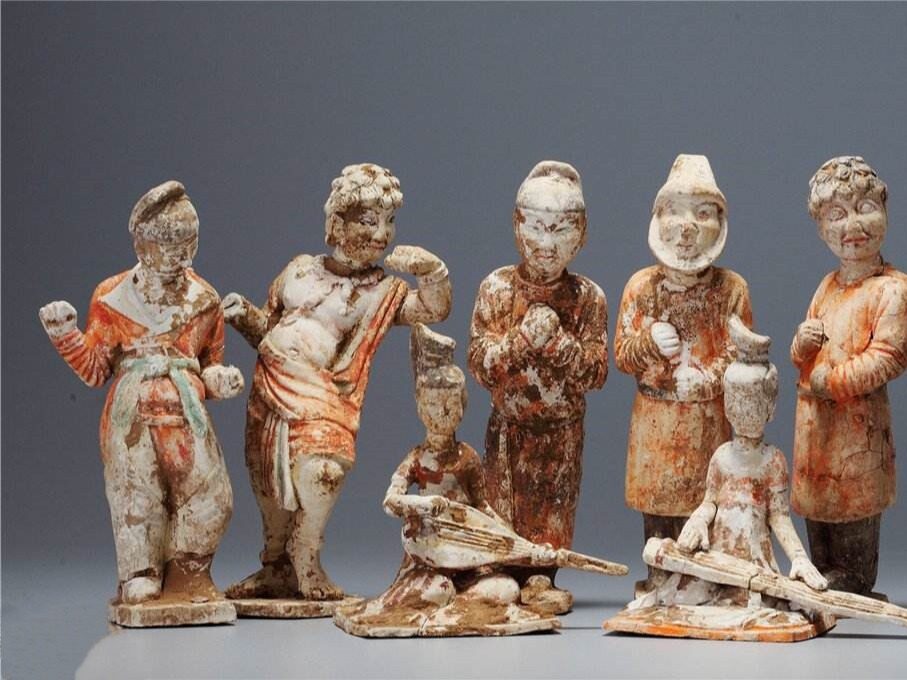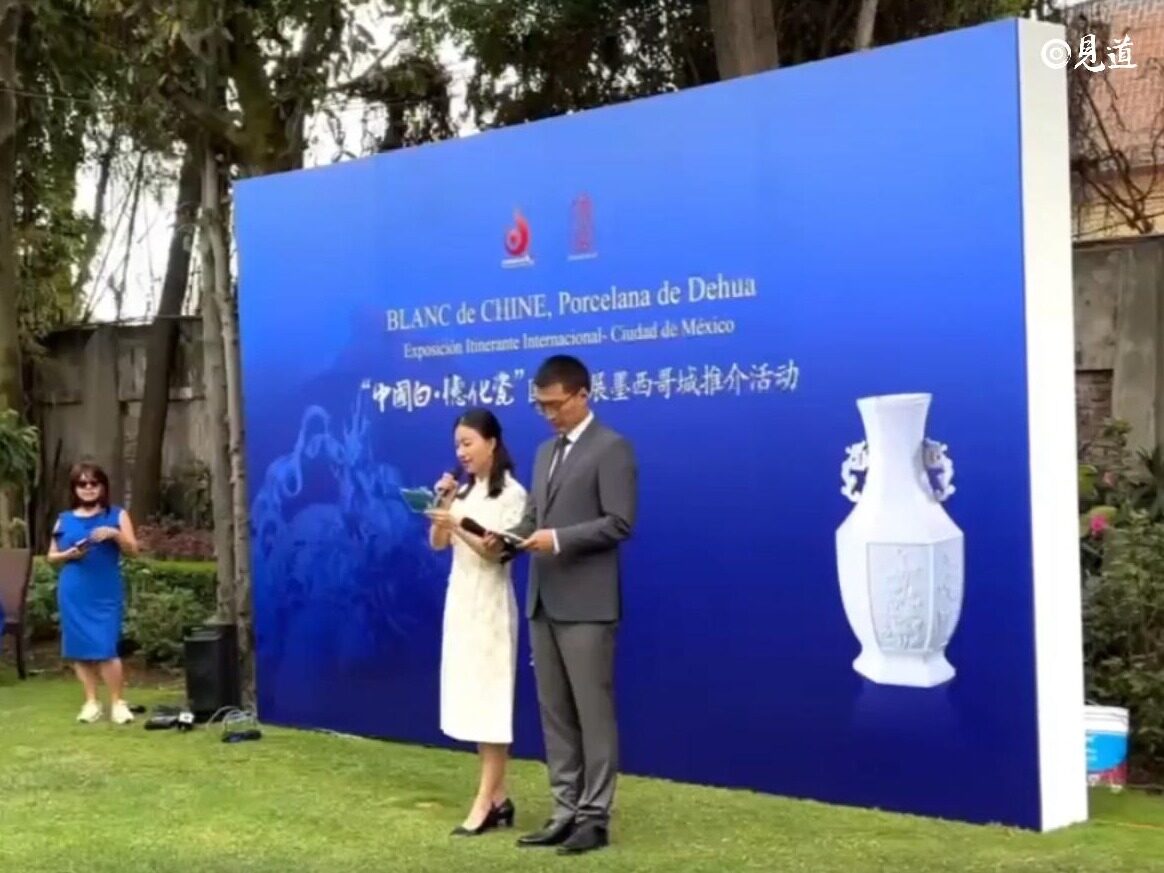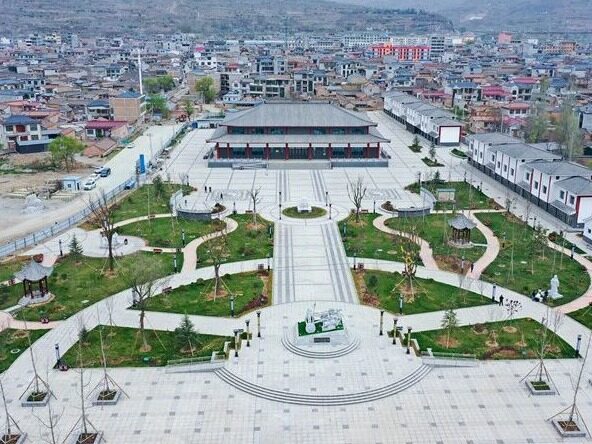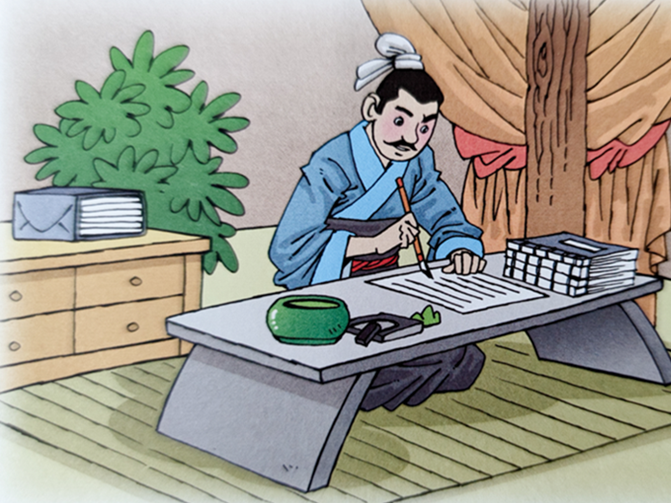- The 387 pieces/sets of unearthed cultural relics exhibited in Shanxi describe the development of human civilization

The quaint and vicissitudes of Taiyuan Temple ushered in a wave of archaeological fever. The archaeological temperature of the Shanxi Provincial Institute of Archaeology (Shanxi Archaeological Museum) carried out here - the exhibition of archaeological achievements in the 13th Five-Year Plan of Shanxi has provided people with a rich cultural feast. It is understood that from 2016 to 2020, Shanxi carried out a total of 228 field excavations, covering an area of 210,000 square meters. Over the past five years, archaeologists have completed the restoration of more than 3,000 bronze ware, bone horns, jade and ceramics. More than 20 project teams of the Shanxi Provincial Institute of Archaeology have rushed to the fields again, from the Fenhe Bay to the Sanggan River, from the Luliang gully to the depths of Taihang...
Extend the historical axis
In 2020, on the 60th anniversary of the discovery of the Xihoudu site, a French magazine published the latest dating data and related research results of the Xihoudu site in Ruicheng County, Shanxi Province, and determined that the isotopic age of the site was about 2.43 million years ago. The result was more than 600,000 years earlier than before.
"According to the scientific method of sampling, from July to September 2009, the drill was drilled to a depth of 70 meters." Wang Yiren, a researcher at the Shanxi Provincial Institute of Archaeology, said that after receiving the news of the publication of the paper, he wrote in his diary The next paragraph: On the second day of the last month of 2020, the long-awaited news arrived while waiting anxiously, and a heavy stone fell to the ground! This is the best commendation and commemoration for the 60th anniversary of the discovery of the Xihoudu site.
Since the discovery of a fossilized antler antler in Xihoudu in 1959, which is more than 1 million years old, Chinese archaeologists have been stooping and searching on this land, advancing the history of ancient Chinese people's use of fire to 1.8 million years ago.
For a long time, due to the lack of human fossils and archaeological materials dating back 100,000 to 50,000 years ago, China was once thought to have spread from Africa. The dating data of the Liwangjian site in Datong shows that modern humans lived in the Datong Basin between 100,000 and 70,000 years ago, using flakes to hunt horses, cattle and other animals as meat, which proves the continuous evolution of modern humans in East Asia with hybridization. theory.
The stone products determined this time also make the stone tools at the Xihoudu site the earliest ancient human remains that have been seen in Eurasia and are supported by isotopic dating evidence, proving that before Homo erectus left Africa, Eurasia had appeared on the continent. The existence of an early human who mastered the use of gravel to make stone tools has greatly extended the time axis of human origin in East Asia, and is of great significance for breaking through the Western-led theory of going out of Africa and further enriching the source value of the Yellow River civilization.
enhance historical reliability
On the exhibition stand, a stone sculpture shaped like a jujube stone and stained with light brown marks is on the list. This is when archaeologists conducted field archaeology at the Shicun site in Xia County in 2020, and unearthed a 6,000-year-old stone silkworm chrysalis.
From 2019 to 2020, the School of Archaeology of Jilin University, the Shanxi Provincial Institute of Archaeology, the Yuncheng Cultural Relics Workstation and other units jointly conducted investigations and excavations on the Shicun site in Xia County, and achieved important results, including the early Yangshao period 6000 years ago. The four stone-carved silkworm chrysalis are the earliest stone-carved silkworm chrysalis images discovered in China, and can be said to be an important symbol of Chinese civilization.
Duan Tianjing, a professor at Jilin University, said that from these findings, it is possible that artificial sericulture and silk reeling had existed in Xia County, located in the Yuncheng Basin, around 6,000 years ago. In addition, it was carved from the granite on Zhongtiao Mountain. The granite can be carved so delicately with clear lines, which shows that the ancestors at that time loved and valued silkworms very much.
Xia County, located in the south of Shanxi, is one of the important birthplaces of ancient Chinese culture. According to legend, the emperor's concubine Lei Zu taught people to raise silkworms in Xia County. In 1926, Li Ji, the father of Chinese archaeology, and Yuan Fuli, the pioneer of archaeology, came to the Xiyin site in Xia County and presided over the first archaeological excavation independently carried out by the Chinese, excavating half a silkworm cocoon cut by hand. The silkworm cocoon is about 6,000 years old and has become a testimony to the ancient Chinese silk culture. This is also the first scientific archaeological excavation in the modern sense independently hosted by the Chinese, which opened a new era of Chinese archaeology and became a landmark in the history of modern Chinese archaeology.
"Not only are they important clues to sericulture and the origin of silk in the early days of Yangshao, but they also provide a trustworthy space for the unearthed silkworm cocoons in Xiyin." Tian Jianwen, a researcher at the Shanxi Provincial Academy of Archaeology, commented on the discovery of the stone-carved silkworm chrysalis.
Archaeologists also found a large number of carbonized millet, millet seeds, stone axes, pottery knives and other agricultural tools in Taoyuan, Linfen and Shidegang in Linfen, indicating that around 5,500 years ago, Shanxi had formed a mature agricultural form with millet as the mainstay. At the same time, the discovery of copper mining and smelting and copper casting sites in Wenxi Qianjinhe and Xiwubi in Jiangxian County has also become a direct evidence for the control and utilization of copper mine resources in the Xia and Shang dynasties in the Central Plains.
rich historical connotation
For a long time, academic circles have said that there was no late merchant in southern Jin. In June 2017, archaeologists from the Shanxi Provincial Institute of Archaeology and Yuncheng City conducted a rescue excavation of the M1 tomb in Jiwutou, Wenxi County, Shanxi Province, and found a surprise. This A-shaped tomb is large in scale, special in shape, and high in specifications. There are sacrificial sacrifices in the waist pit, and there is a chariot and horse pit on the side of the tomb, and a large number of inscriptions with hidden characters have been unearthed.
The tombs are of high grade and the owner of the tomb is a distinguished person, which made the archaeologists at the scene extremely excited. By judging the shape of the tomb and the ornamentation and shape of the unearthed bronzes, archaeologists finally determined that the tomb was a relic of the late Shang Dynasty, and the owner of the tomb may be the leader of the Fang state, second only to the Shang king.
The territory of the Shang Dynasty consisted of Wangji and Fangguo. Wangji was the area where the Shang king’s territorial and affiliated nations lived, and Fangguo was a political stronghold distributed around Wangji’s periphery. The discovery of this cemetery fills the gap in the remains of the late Shang Dynasty in southern Jin, and confirms a new location of the Yin and Shang Fang Guoni people. The remains were also selected as one of the top ten new archaeological discoveries in the country in 2018.
From the Western soil bridgehead of the Shang Dynasty to the fertile soil of the Jin Dynasty in the Central Plains, the Xiangfen Taosi North Cemetery, located in the southeast of the Linfen Basin, was the family burial area of the Jin Dynasty nobles in the Eastern Zhou Dynasty. The highest level of bronze casting technology.
Shanxi Shuozhou, which is located at the Yanmen Pass in the south, was a strategic fortress for the Han Dynasty to resist the southward movement of the Xiongnu. From October 2019 to December 2020, archaeologists rescued and excavated more than 400 tombs from the Eastern Zhou Dynasty to the Qin and Han Dynasties in Houzhai Village, Shuocheng District. The excavation of the Houzhai cemetery provides a wealth of archaeological materials for the study of the cemetery layout, tomb hierarchy and funeral customs in the area along the Great Wall in the north from the Eastern Zhou Dynasty to the Qin and Han Dynasties. value.
In November 2019, two ancient wooden wells, one large and one small, were discovered during the renovation of the shanty towns in Yangquan City. The upper part of the small wells had been destroyed, and the wooden well walls of the large wells were basically intact. This well is a large-scale ancient wooden well with the most complete structure in this period discovered in China. The nine-sided structure is quite peculiar, and the masonry technology is exquisite. The notches and tenons in the wooden components are the most complete early mortise and tenon structures in existence, reflecting the superb design concept and advanced construction technology.
Revitalize historical scenes
"Stone tool splicing is a reverse push-type research method for archaeological research on the process of stone tool manufacturing." According to Zhang Guanghui, Institute of Chinese Civilization, Shanxi Provincial Institute of Archaeology, the researchers restored the stone tool production of Dingcun people 100,000 years ago through stone tool splicing. , processing operation chain, which restores a picture of human life 100,000 years ago: the ancient Dingcun people who were active on both sides of the Fenhe River used angular shale gravel as the rough to produce flake stone tools; Scrapers, stone balls, etc. hunt elephants and deer for food; use fire to keep warm and cook.
Bright in color and grand in scale, the 100-person glazed ceremonial figurines unearthed in the Shijiazhuang cemetery in Changzhi are composed of door gods, warriors, musicians, officers, military generals, attendants, bearers, etc., which reproduces the etiquette system at that time. The Ming Dynasty implemented the vassal system. The fiefs located in Shanxi included the Jin King Zhu Ho (Taiyuan), the Dai King Zhu Gui (Datong), and the Shen King Zhu Mo (Changzhi) who moved in later. The glazed ceremonial figurines unearthed from the Shijiazhuang cemetery in Changzhi belong to Zhu Tiandi, the general of Fengguo of the Yunhe County of the Shenwang family.
The three-colored camels, horses, heavenly kings, and tomb-suppressing beasts unearthed from the Tang tomb in Xinjiangyaotou are not only a symbol of the wealth and social status of the tomb owner, but also a realistic portrayal of social stability and prosperity.
In 2016, the Shanxi Provincial Institute of Archaeology discovered a Song and Jin porcelain kiln site in Hejingu Town. The discovery of the Jin Dynasty porcelain pillow in Hejin kiln not only filled the gap of no related porcelain making relics in this area, but also found a fire for related porcelain cultural relics at home and abroad. The kiln-making yard also revealed the complete porcelain-making industry chain, which provided a wealth of information for the study of the porcelain-making process and kiln-firing technology of the Hejin kiln during the Song and Jin Dynasties, and was selected as one of the top ten new archaeological discoveries in the country that year.
From the Northern Dynasties to the Ming and Qing Dynasties, China experienced two upsurges of ethnic integration, and finally formed a unified multi-ethnic country. The exchanges between various ethnic groups and the mutual learning of Eastern and Western cultures have promoted the great development of Chinese culture and have exerted extensive influence in East Asia and the world. Shanxi is the core ruled area of the Northern Dynasty, the place where the Tang Dynasty first appeared, and it was also the economic and cultural center of the North in the Song and Yuan Dynasties. Scenes. Editor/He Yuting
Comment
 Praise
Praise
 Collect
Collect
 Comment
Comment
 Search
Search














Write something~